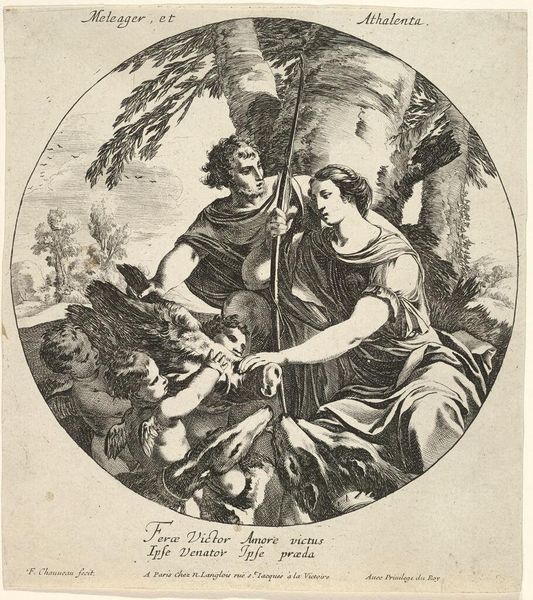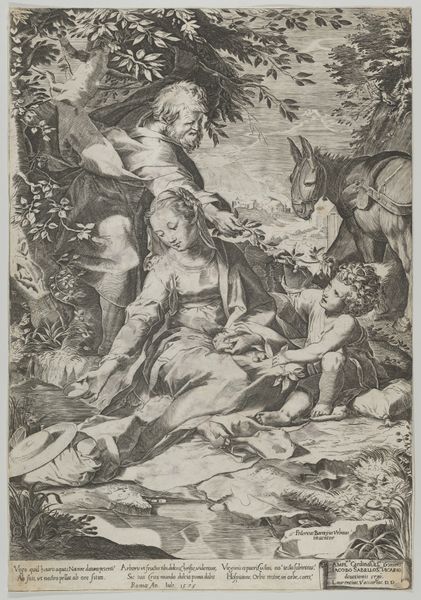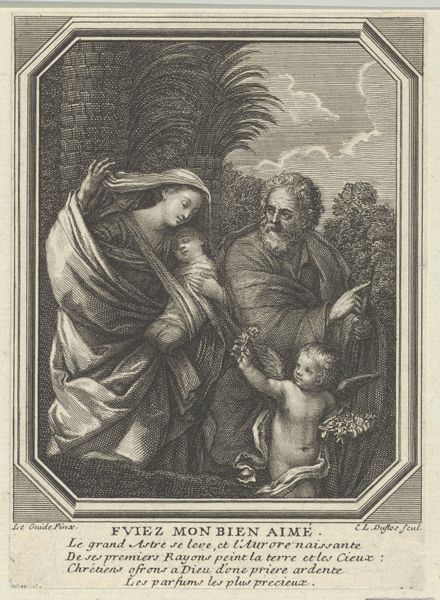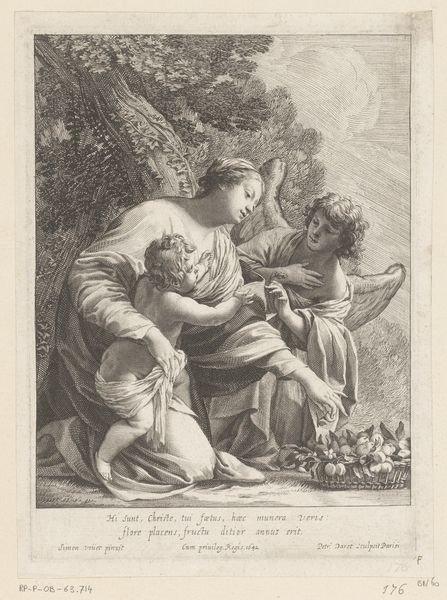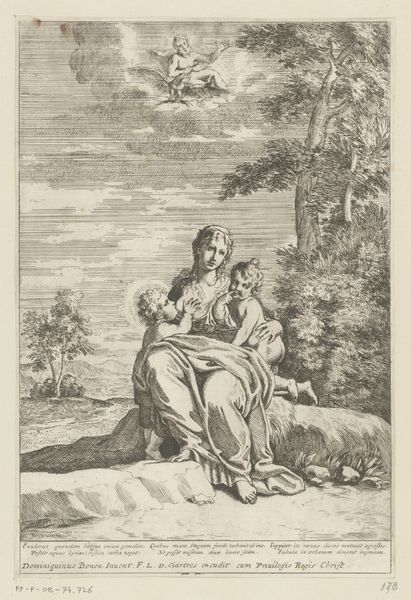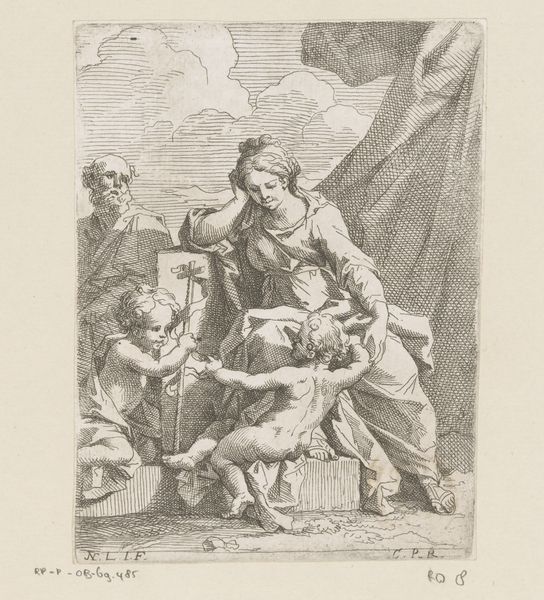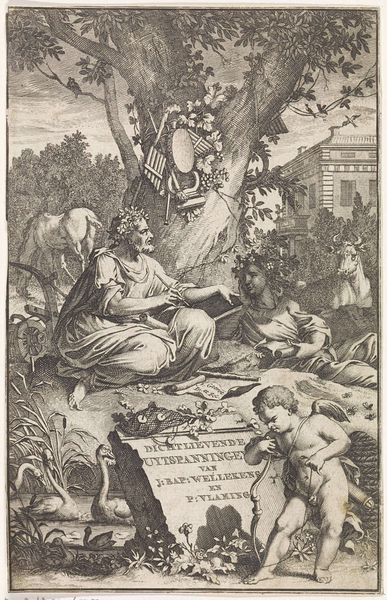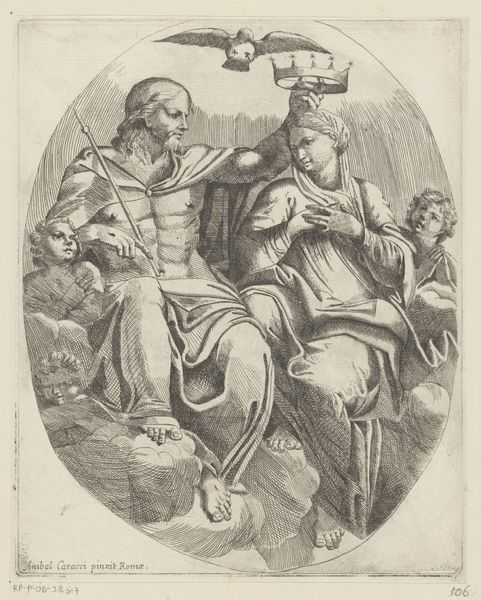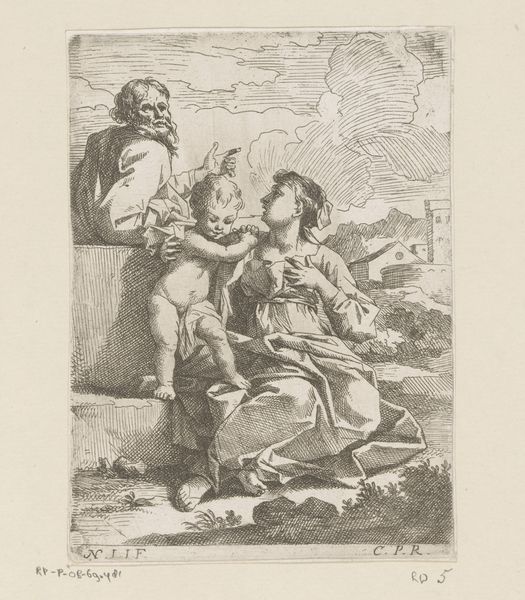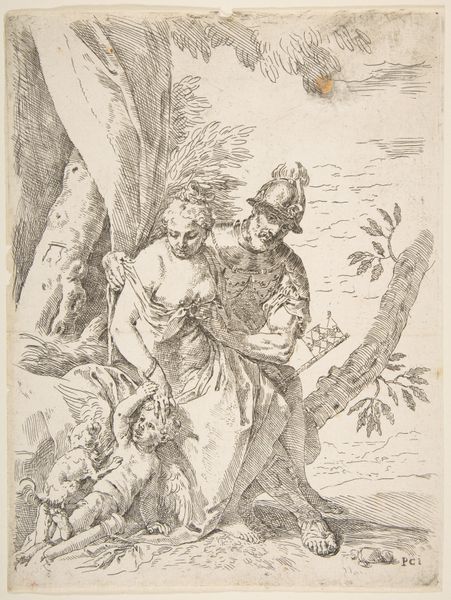
drawing, print, etching
#
drawing
#
narrative-art
#
baroque
# print
#
etching
#
figuration
#
pencil drawing
#
history-painting
Dimensions: Sheet (Trimmed): 8 7/8 × 7 5/8 in. (22.5 × 19.3 cm)
Copyright: Public Domain
Curator: This etching by François Chauveau, "Meleager and Atalanta," made between 1638 and 1648, is a fascinating example of Baroque printmaking. The swirling lines and dramatic scene have a definite energy. What strikes you about this piece? Editor: Well, the circular composition is interesting, and the detail achieved through etching is impressive, but what’s more engaging to me is the combination of classical figures with these playful cherubic forms, a very clever connection! I'm curious about the process of creating it. How was this sort of intricate detail achieved back then, and how did it fit into the broader art market? Curator: Excellent questions! We should focus on the labor involved. Etching demanded significant skill and time, requiring the artist to meticulously transfer the design onto a metal plate covered in wax, then use acid to bite away at the exposed areas. This was painstaking work. These prints became accessible commodities, think of the labour reproduced and consumed within this scene. Consider too the social implications: were these images aimed at specific patrons? Did Chauveau operate within a guild system? Editor: That’s interesting. The idea of accessible art brings a question: what about the choice of materials? Would cheaper materials influence accessibility? Curator: Exactly! Paper quality, ink types— these affected price points and, thus, the accessibility. We should investigate the social status of printmakers relative to painters or sculptors at the time to reveal insights into artistic labor’s value in 17th-century France. The relationship between production, material, and value, helps uncover so much about artistic economies of the Baroque era. Editor: Thinking about it this way shifts my perspective completely. Instead of just admiring the image, I'm thinking about the artisan's hands, the supply chain of materials, and the consumer for whom it was intended. It makes the artwork far more complex. Curator: Precisely! Now we have an angle of production to consume this scene with, adding value far beyond its initial glance!
Comments
No comments
Be the first to comment and join the conversation on the ultimate creative platform.
